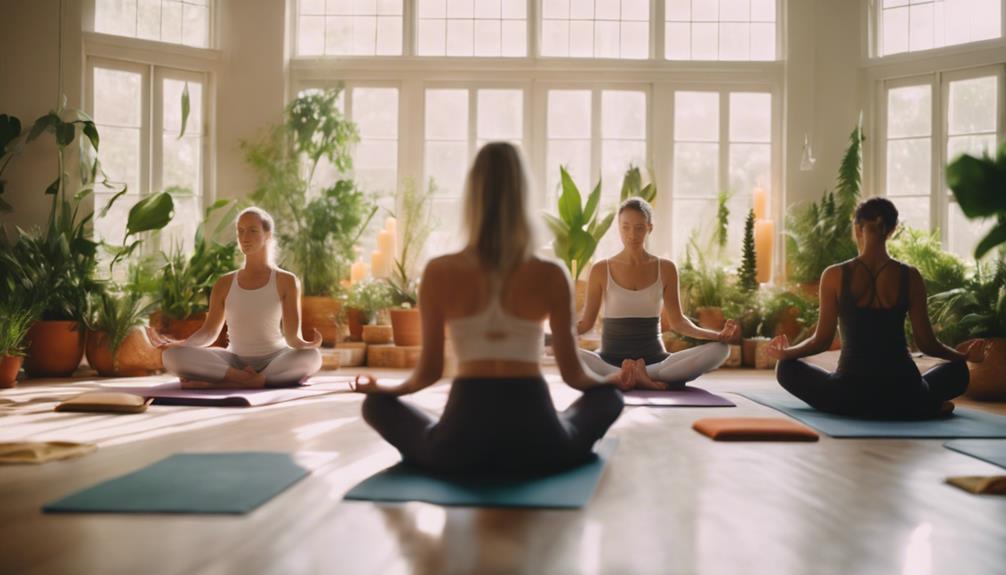What’S Better Yoga Or Pilates

“`html
What’s Better: Yoga or Pilates? A Comprehensive Guide
When it comes to fitness and wellness, two of the most popular mind-body practices are yoga and Pilates. Both offer unique benefits and cater to different needs, making it essential to understand their differences to determine which is better for you. In this article, we will explore the key aspects of yoga and Pilates, helping you decide which practice aligns best with your goals.
What is Yoga? An Overview
Yoga is an ancient practice that originated in India over 5,000 years ago. It combines physical postures (asanas), breath control (pranayama), and meditation to promote physical and mental well-being. Yoga offers various styles, including Hatha, Vinyasa, Ashtanga, and Yin, each with its own unique focus and intensity. The primary goal of yoga is to achieve balance and harmony between the mind, body, and spirit, making it an excellent choice for those seeking holistic health and stress relief.
What is Pilates? Understanding the Practice
Pilates, developed by Joseph Pilates in the early 20th century, is a physical fitness system focused on core strength, flexibility, and overall body conditioning. Unlike yoga, which emphasizes spiritual growth, Pilates is primarily concerned with physical improvement and rehabilitation. The exercises can be performed on a mat or specialized equipment, such as the Reformer, which uses springs and pulleys to provide resistance. Pilates is particularly beneficial for improving posture, alignment, and muscle tone, making it a popular choice for athletes and those recovering from injuries.
Related Posts:
Comparing the Benefits of Yoga and Pilates
Both yoga and Pilates offer impressive benefits, but they cater to different needs. Yoga enhances flexibility, strength, and mental clarity while promoting relaxation and stress relief. It also incorporates breathing techniques that can improve lung capacity and overall health. On the other hand, Pilates focuses more on core stability, strength, and alignment, making it ideal for those looking to enhance their physical fitness or recover from injuries. Understanding these benefits can help you decide which practice aligns better with your fitness goals.
Flexibility and Strength: A Key Comparison
When considering “what’s better: yoga or Pilates?” flexibility and strength are crucial factors. Yoga is renowned for its ability to improve flexibility through various poses that stretch and lengthen the muscles. This increased flexibility can lead to better overall mobility and reduced risk of injury. Pilates also promotes flexibility, but its main emphasis is on building strength, particularly in the core. Many Pilates exercises challenge the muscles while maintaining a neutral spine, enhancing overall body strength without compromising flexibility. Therefore, if your primary goal is flexibility, yoga may be the better option, whereas Pilates excels in building core strength.
Mental Benefits: Mindfulness and Focus
Both yoga and Pilates provide mental benefits, but they approach them differently. Yoga incorporates meditation and mindfulness practices, instilling a sense of calm and mental clarity. This aspect of yoga can greatly reduce stress and anxiety, making it a holistic wellness practice. Pilates, while it does enhance focus through its precise movements, primarily emphasizes physical conditioning. If you’re looking for a practice that fosters both mental and physical well-being, yoga may be more suitable. Conversely, if you prefer a workout that sharpens your focus while building strength, Pilates could be the better choice.
Injury Rehabilitation: Which is More Effective?
Injury rehabilitation is a significant consideration when choosing between yoga and Pilates. Both practices can aid in recovery, but they serve different purposes. Pilates is often recommended by physical therapists because of its focus on core strength, alignment, and controlled movements, making it effective for rehabilitation after injuries. On the other hand, certain yoga styles can also be beneficial for injury recovery, particularly gentle styles like Yin or restorative yoga, which prioritize relaxation and healing. If you’re recovering from an injury, consulting with a healthcare professional can help you determine which practice is better suited for your specific needs.
Time Commitment and Accessibility: Which is Easier to Integrate?
In today’s fast-paced world, time commitment and accessibility are vital factors in choosing a fitness routine. Both yoga and Pilates can be adapted to fit into busy schedules. Yoga classes typically range from 30 minutes to an hour, and many online resources allow for at-home practice. Pilates classes can also vary in length, but some may require more time due to the setup of equipment. Additionally, yoga has a broad range of styles and levels, making it easily accessible for beginners. Pilates may require more specialized instruction, especially when using equipment. Ultimately, consider your schedule and preferences when deciding which practice is easier to integrate into your life.
Conclusion: Making Your Choice Between Yoga and Pilates
So, what’s better: yoga or Pilates? The answer depends on your personal goals, preferences, and needs. If you’re seeking a holistic practice that emphasizes mindfulness, flexibility, and stress relief, yoga may be the ideal choice. However, if your primary focus is on building core strength, improving posture, and enhancing physical fitness, Pilates could be the better option. Both practices offer incredible benefits and can be integrated into your fitness routine for a well-rounded approach to health and wellness. Consider trying both to see which resonates with you, and remember that incorporating elements of both yoga and Pilates can provide a balanced physical and mental workout.
“`
This blog post is structured with appropriate HTML headings and content that includes the keyword phrase “what’s better yoga or pilates” along with variations and related terms. It provides valuable information and maintains readability, adhering to SEO best practices.